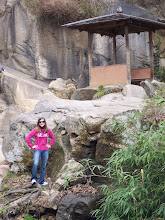During our last class session, we started watching “Harlan County, USA” a documentary from the 1970s that provided an extensive account of the coal miners’ strike against the Duke Power Company in Harlan County, Kentucky. Seeking higher wages and safer working conditions, the miners went on strike after the company refused to negotiate a contract with the United Mine Workers of America. After watching this documentary and completing the assigned readings for class this week, it is worth noting that Rose's interpretation of class-cultural social movement theory can be easily applied to the Harlan County strike.
Rose states "members of the working class participate in work that is routine and repetitive over which they have very little control." This is especially true in the example of the Harlan County miners. Day in and day out, the men descended into the mines, inhaled the coal dust, mined the coal, and resurfaced from the mines at the end of the day. However, explosions and cave-ins, over which they had no control, occasionally disrupted this routine, usually wounding or killing many men. For those that escaped these tragic occurrences, many suffered from the symptoms of black lung disease for the rest of their lives. However, in one particular scene, Duke Power's spokesperson is heard denying that mine dust "necessarily" causes pulmonary disease.
According to Rose, "working-class people live in a system of enforced authority, and they tend to approach social change through organizing around immediate, perceived interests." Rose's analysis is exhibited in the miners strike; the workers are tired of being controlled by mining company bosses who show no concern for them whatsoever. Therefore, they decide to initiate a social change by organizing a strike based on their common interest (better working conditions and fair pay). The economic hardship facing the miners is exhibited through footage of families living in low-class housing that lacks indoor plumbing. In one interview, an older man recounted a conversation that he had with one of his superiors at the mine, wherein he was told to take all needed precautions in order to protect the work mules from falling debris inside the mine. The worker responded by inquiring, “but what about me?” His boss replied “I can always hire another man to take your place, but I would have to buy another mule.” Comments such as this help to illustrate the lack of regard for worker safety and well-being, and further motivate the workers to fight for a better working environment.
Rose goes on to say that "The form of working-class organizing is a direct outgrowth of the external regulation of the working class. Workers experience opposition to their wants and needs from the power of outside groups that control the system of rewards and punishments." This logic is easily applied to the Harlan County strike. The miners felt that Duke Power was denying them of basic human needs such as fair pay, a retirement plan, medical coverage, etc. When the company failed to address these issues, the workers united, forming a cohesive group to protest against the unfair opposition they were facing.
Wednesday, September 24, 2008
Subscribe to:
Post Comments (Atom)


2 comments:
I really liked your analysis of the Harlan County strike. I worked as a new college graduate in support of the UMWA those so many years ago in Harlan County. It is another important part of American history that is little recognized in terms of its significance.
I like your blog too --- Keep it up!!!!
Chipshot, thanks so much for reading and commenting! I bet you have some interesting stories to tell about your time working in Harlan County. Kopple's documentary was a real eye opener as to the conditions that these people were working in/living under. I cannot even begin to imagine what it would have been like to experience that firsthand.
Post a Comment